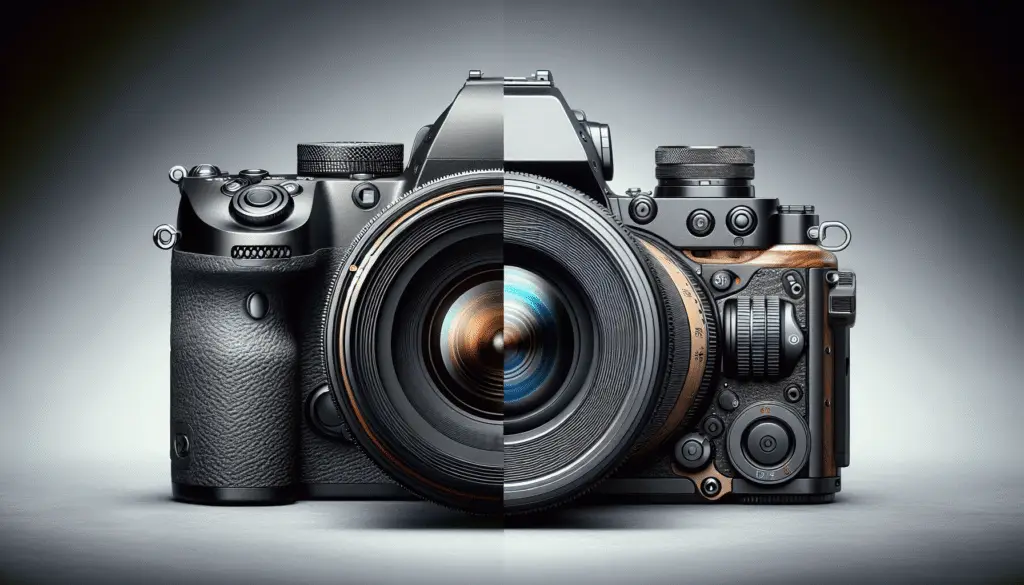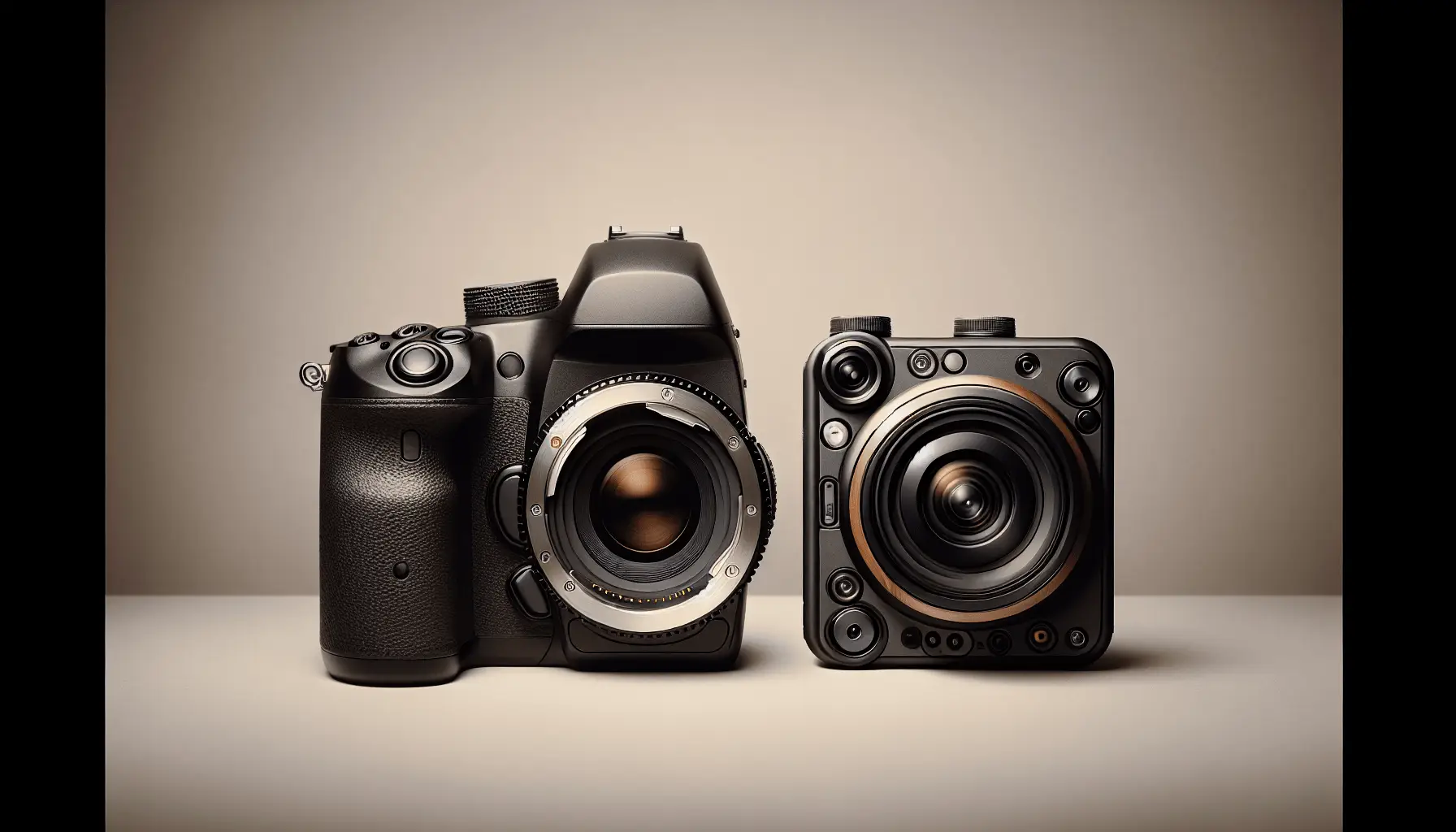Can we confidently say that AI cameras can replace DSLRs for our everyday photography needs? This question brings forth a conversation about technology, convenience, and the essence of what makes a photograph meaningful. While many of us at some point have snapped a candid picture on our phones, the transition to AI-driven cameras and their potential to match or even surpass the quality of our beloved DSLR setups is a thought that sparks both excitement and skepticism.

The Evolution of Photography
Photography has come a long way since its inception. From the heavy, cumbersome wooden cameras of the 19th century to the compact digital cameras of today, we’ve seen innovations that have shaped how we capture our moments. DSLRs entered the scene, offering us a robust mix of quality and control, appealing to amateurs and professionals alike. Now, with AI cameras emerging on the market, we find ourselves contemplating their role in our casual photography engagements.
Understanding AI Cameras
Before we dive deeper, let’s clarify what we mean by “AI cameras.” These are smart cameras that utilize artificial intelligence to enhance the photography experience. They come equipped with features like scene recognition, automatic adjustments, and even editing capabilities with just a click. Essentially, these gadgets can make decisions for us, which can be a game-changer for those of us who might feel overwhelmed by manual settings.
The Shift in Casual Photography Trends
As more of us rely on our smartphones for photography, the line between what we once relied on our DSLRs for and what we can now achieve with our phones and AI cameras is blurring. Casual photography has shifted from being a hobby for a select few to an activity enjoyed by the masses. The ease of snapping a photo and sharing it instantly has changed our expectations.
Pros of AI Cameras
Let’s explore the enticing advantages AI cameras bring to our photography.
Convenience and Usability
One of the main perks of AI cameras is how easy they are to use. No longer do we need to worry about intricate settings and technical jargon. Instead, we can start shooting right away, allowing us to focus on the moment rather than how we’re capturing it.
Quick Capturing of Moments
With AI technologies, these cameras can automatically identify the best settings based on what we’re shooting. That means when our child takes a spill during a soccer game or our dog does something adorable, we don’t have to fumble with our camera settings. The AI adjusts for us, capturing the moment in all its glory.
Intelligent Editing
Some AI cameras even come with built-in editing features that can enhance our photos right away. With the push of a button, our images can be optimized for brightness, contrast, and sharpness. This eliminates the need for us to learn complicated editing software, allowing us to share photos almost instantly.
Cost-Effectiveness
AI cameras generally come at a lower price point than DSLRs, which can require a significant investment, especially when considering lenses and other accessories. For those of us who snap pictures occasionally, an AI camera could be an affordable alternative that doesn’t compromise quality.
Cons of AI Cameras
It’s essential to consider the flip side, too. While AI cameras have their perks, they’re not without limitations.
Lack of Creative Control
One of the primary drawbacks of AI cameras is the reduced manual control. As casual photographers who may want to experiment with settings like aperture and shutter speed, we might find these smart cameras limiting. The automatic settings can sometimes produce results that don’t match our creative vision.
Possible Over-Reliance on Technology
With AI doing much of the heavy lifting, there’s a risk that we might become overly reliant on technology. What happens when the AI doesn’t recognize a scene accurately? If we lose the ability to self-adjust, we could miss out on learning essential photography skills.
Image Quality Varieties
While AI cameras can produce fantastic images, there are instances where DSLRs outperform them. The larger sensors in DSLRs generally provide better low-light performance and dynamic range. If we’re aiming for gallery-quality images or capturing highly detailed landscapes, we might still find ourselves leaning on our trusted DSLRs.
Battery Life Concerns
Smart cameras tend to have shorter battery life compared to DSLRs. If we’re out and about for an extended period, especially on a day filled with events, the battery could run out quickly. This limitation is a considerable factor for users looking to capture everything throughout the day without needing to recharge.
The Versatile Nature of DSLRs
Despite advancements in AI cameras, DSLRs continue to hold their ground for multiple reasons. Understanding these offers us perspective, especially if we’re on the fence about diving into this new wave of technology.
Exceptional Image Quality
Being enthusiasts of high-quality images, we must acknowledge that DSLRs shine when it comes to image quality. With larger sensors and superior optics, they typically produce clearer, sharper, and more vibrant images than many AI cameras.
Manual Customization
For those of us who enjoy experimenting with creative settings, DSLRs still reign supreme. They offer us extensive control over settings like ISO, shutter speed, and aperture, allowing us to fine-tune our shots and realize our creative potential.
Variety of Lenses
Another significant advantage of DSLRs is the ability to switch between various lenses. From wide-angle lenses perfect for landscapes to telephoto lenses for close-up shots, the versatility provided by interchangeable lenses isn’t something AI cameras can match.
Built for Durability
DSLRs often exhibit robust durability, making them better suited for outdoor use and rugged environments. Many models are built to withstand weather elements like rain, dust, and even extreme temperatures, giving us the confidence to take them anywhere.

Balancing Convenience and Quality
Striking a balance between convenience and quality is vital when considering whether AI cameras can replace DSLRs for our casual photography needs. It’s not solely about the technology; it’s also about how we align those options with our specific photography habits, preferences, and goals.
Who Should Choose AI Cameras?
For those of us who primarily share photos on social media or simply want to document our daily lives without getting bogged down in technical complexities, AI cameras are an excellent choice. They’re user-friendly, and their built-in features enhance our experience, making capturing and sharing moments a hassle-free process.
Who Should Stick with DSLRs?
On the other hand, if we are passionate about photography and enjoy the finer details, sticking with a DSLR might serve us better. Not only do we have greater control over our images, but we also have the tools to experiment creatively, refining our skills along the way.
The Future of Photography
As technology continues to advance, we can expect both AI cameras and DSLRs to evolve. We’re likely to witness enhancements that merge the best features of both worlds, elevating our photography experience.
Technological Integration
The future may bring AI technologies into DSLRs, creating a hybrid model that maintains the essential features we love while integrating smart features that make shooting more accessible. Imagine a DSLR equipped with AI that suggests the best settings based on lighting conditions or even predicts our next shot based on our past preferences.
Closing the Gap
As AI cameras improve and the demand for high-quality casual photography rises, we could see AI technology bridging the gap further between casual users and professionals. We may find ourselves with devices that democratize capturing striking images without compromising artistic expression.
Opportunities for Learning
With the emergence of AI in photography, we could also see enhanced learning opportunities. Many companies are already utilizing AI to create educational apps that teach aspiring photographers about composition and skill development. This shift can enable us to refine our techniques, regardless of the camera we choose.
Conclusion
In the end, answering whether AI cameras can truly replace DSLRs for casual photography isn’t straightforward. Both options have their strengths, catering to different needs and levels of engagement in photography. As we weigh the convenience of AI cameras against the rich features of DSLRs, it becomes evident that neither option is superior but rather complements the other.
What we choose ultimately depends on our intentions as photographers. Whether we aspire to capture memories effortlessly or engage in a creative process deeply, we have the tools at our disposal to suit our style and preferences. As we move forward in this ever-evolving realm of photography, let’s embrace the innovations of AI cameras while cherishing the artistry that our DSLRs have brought into our lives. Through this blend of technology and creativity, we can enrich our interactions with the world around us, capturing it in all its beauty.

